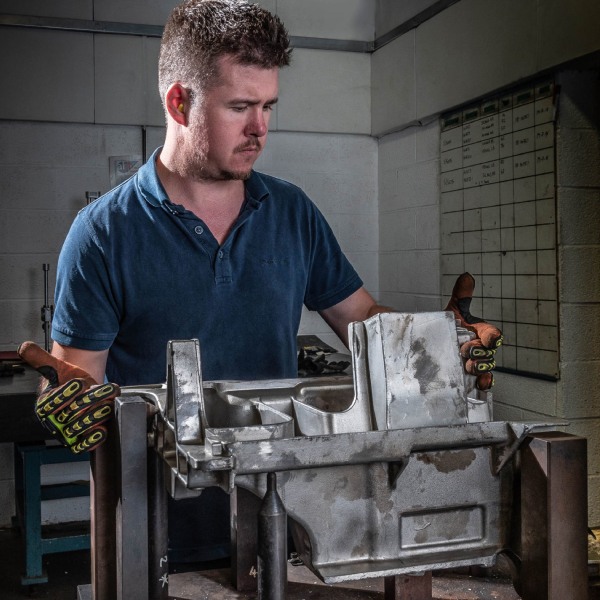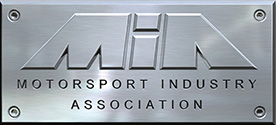Setting: Correcting Material Distortion
Alloy Heat Treatment can set to close tolerances, often to customer supplied fixtures, in a tight time frame. The Setting Process removes distortion in the solution treated condition, when products are still ductile. This is done via manual / mechanical correction techniques which plastically manipulate the material whilst, proof stress is low in the freshly solution treated condition.
Our Setting Process
- Mechanical Setting Techniques
- Setting Department Open 24 Hours
- Working within close tolerances
- Working to customer supplied fixtures
- Quick turnaround time on setting work
- Alloy Heat Treatment operate a 24-hour setting department catering for; aerospace, automotive and engineering needs.
Alloy Heat Treatment can set to close tolerances, often to customer supplied fixtures, in a tight time frame. This process can be extended to the rectification of parts supplied to AHT, in a distorted condition from the manufacturing process.

What Is Setting?
The Setting Process removes distortion in the solution treated condition, when products are still ductile. This is done via manual / mechanical correction techniques which plastically manipulate the material whilst, proof stress is low in the freshly solution treated condition.
This Process removes distortion in the solution treated condition, when products are still ductile. can set to close tolerances, often to customer supplied fixtures, in a tight time frame. This process can be extended to the rectification of parts supplied to AHT, in a distorted condition from the manufacturing process.
How We Set Heat Treated Alloys
Discover how our complete alloy and aluminium heat treatment service is used within a wide variety of sectors”.
In this video you’ll get a preview of how Alloy Heat set heat treated alloys as part of the heat treatment process. Setting is where we make sure the product adheres to specification.
This is the fifth video in a series of social media clips that explain the alloy heat treating process.
Setting: Testimonials Of Our Work
Kevin Brierley, Technical Manager – Sarginsons Die Casting
Sarginsons have been using AHT`s Setting service now for many years. Whilst the setting operation can at times look somewhat “random”, it hides the skill that is actually essential, in setting the “thin walled” complicated parts we cast, to the Customers exacting requirements.
I know all of the operatives very well, and whist presenting a “professional approach,” there is always room for some “banter” along the way. Overall, I would have no hesitation in recommending AHT`s Setting service to anyone!
Sam Edwards, Quality Engineer / Supervisor – Charter Castings
AHT’s capabilities provide Charter Castings which a quick, accurate, setting service that is tailored around our requirements
Setting Resources
What Is Material Distortion?
In metallurgy, distortion refers to the deformation of a metal object due to external forces or internal stresses. Distortion can occur during heat treatment and manufacturing process, such as when a metal object is subjected to high temperatures, mechanical forces, or a combination of both. Distortion can also occur during service, when a metal object is subjected to loads or other external forces that cause it to deform.
How Does Material Distortion Occour?
Distortion can occur in intricate products, due to the rapid heat transfer from the quenching process, this can create a thermal gradient in certain parts, causing twist. Distortion can occur during the manufacturing process, such as when a metal object is subjected to high temperatures, mechanical forces, or a combination of both. Distortion can also occur during service, when a metal object is subjected to loads or other external forces that cause it to deform.
What Are Mechanical Setting Techniques?
Mechanical Setting Techniques: Hammering and Pressing. Hammering is the more common of the two, however if done incorrectly this can cause surface damage to the alloy in question. This is why it’s always best to call a specialist or metallurgist to best remedy your material distortion.
Mechanical Setting Techniques
Hammering and Pressing. Hammering is the more common of the two, however if done incorrectly this can cause surface damage to the alloy in question. This is why it’s always best to call a specialist or metallurgist to best remedy your material distortion.
Setting : Blogs, News & Resources
We have a list of helpful blogs on the subject of mechanical setting, feel free to search our knowledge base and our blogs to familiarise yourself with the processes we undertake during the setting service.
Blogs:
Mastering Mechanical Setting Techniques: The Importance of Hammering in Alloy Heat Treatment
Mechanical Setting FAQ’s
There are several advantages of setting and many benefits of correcting material distortion:
Improved mechanical properties: Material distortion can cause significant changes in the mechanical properties of aluminium alloys, such as reduced strength, ductility, and toughness. By removing material distortion, the mechanical properties can be restored, leading to improved performance and functionality of the final product.
Enhanced dimensional accuracy: Material distortion can cause dimensional inaccuracies in the final product, leading to problems with fit, alignment, and assembly. By removing material distortion, the dimensional accuracy of the aluminium alloy can be improved, resulting in a more precise and reliable product.
Reduced scrap and waste: Material distortion can lead to high levels of scrap and waste during the manufacturing process, which can increase costs and negatively impact the environment. By removing material distortion, the amount of scrap and waste can be reduced, leading to more efficient and sustainable production.
To remove quench distortion from heat treated parts, to ensure heat treated parts are restored near-original dimensions, to ensure machining clean-up and correct fit.
Mechanical setting services aim to induce controlled deformation in metal components to improve their mechanical properties, such as dimensional stability, strength, and fatigue resistance, without altering the material’s chemical composition.
Rough machined wrought aluminium alloy parts and aluminium alloy castings. A wide range of metal components can benefit from mechanical setting, including springs, wires, rods, tubes, shafts, and various structural parts that require enhanced mechanical performance.
This is usually a skilled-manual, process which manipulates annealed or as-quenched aluminium parts to meet specified dimensions.
Mechanical setting differs from conventional metal forming processes, such as forging or rolling, as it involves physical manipulation of applying controlled stress or strain to reshape the material in a specific manner, without significant changes to its overall shape or dimensions.
Common methods used in mechanical setting include cold working, stress relieving, shot peening, burnishing, and controlled plastic deformation techniques like torsion, compression, and bending.
Mechanical setting offers benefits such as increased material strength and hardness, improved dimensional stability, enhanced resistance to fatigue, better wear resistance, and reduced susceptibility to stress corrosion cracking.
Without mechanical setting, many aluminium alloy parts would not be able to be heat treated because quench distortion would be too great.
Setting or correcting material distortion is a critical process in the aerospace, automotive, and engineering sectors. Here are some reasons why it is important:
Safety: Aerospace and automotive industries require high-performance and reliable materials to ensure safety. Material distortion can weaken the structural integrity of the components, leading to failure during operation. Correcting material distortion ensures that the components meet the necessary safety standards and can perform their intended function safely.
Efficiency: Material distortion can lead to dimensional inaccuracies and surface defects, which can affect the efficiency of the components. Correcting material distortion ensures that the components meet the required specifications and can perform their function efficiently, reducing downtime and increasing productivity.
Cost: Material distortion can lead to high levels of scrap and waste, which can increase the cost of production. Correcting material distortion reduces waste and increases the yield of usable components, leading to cost savings in the manufacturing process.
Quality: Material distortion can cause surface irregularities and defects, which can affect the quality and aesthetics of the final product. Correcting material distortion ensures that the components meet the required quality standards and have an acceptable appearance.
Reliability: The engineering sector requires high-performance materials to ensure reliability and durability of components. Material distortion can weaken the material properties and lead to premature failure. Correcting material distortion ensures that the components are reliable and can perform their intended function over their service life.
Mechanical setting can be applied to various metals and alloys, including steels (carbon, alloy, stainless), aluminium, titanium, nickel-based alloys, copper alloys, and more. The specific technique and parameters may vary depending on the material’s properties.
Tolerances are determined by drawings and machining stock allowances. Mechanical setting must restore dimensions of parts to within dimensional tolerances or within machining stock allowances.
Process parameters for mechanical setting, such as applied stress or strain, temperature, duration, and number of cycles, are determined based on the material’s composition, desired properties, component geometry, and the intended application.
Post heat treatment machine setting is not permitted on fully heat treated parts, as this will induce stresses and possibly cracks, which could result in premature failure.
In some cases, post-setting heat treatment may be required to relieve residual stresses or enhance specific material properties. Heat treatment processes like annealing or tempering may be incorporated after mechanical setting, depending on the requirements.
Mechanical setting can induce minor dimensional changes in the component due to the applied strain or deformation. However, these changes are typically controlled and accounted for during the design and manufacturing process.
A metallurgy or heat treatment company with expertise in mechanical setting can provide guidance on suitable techniques, process optimization, material selection, and quality control. They can also perform the necessary tests and inspections to ensure the desired properties and dimensions are achieved.







